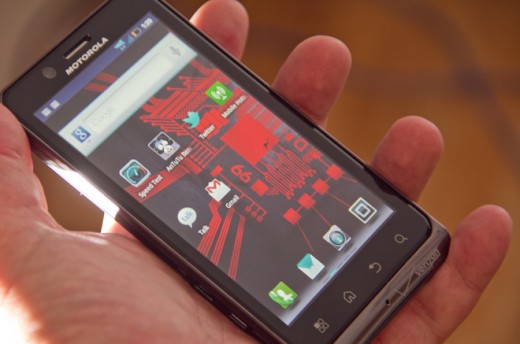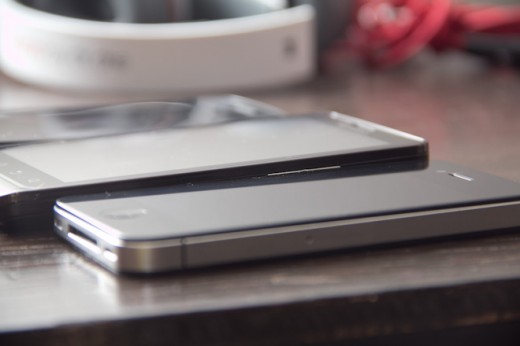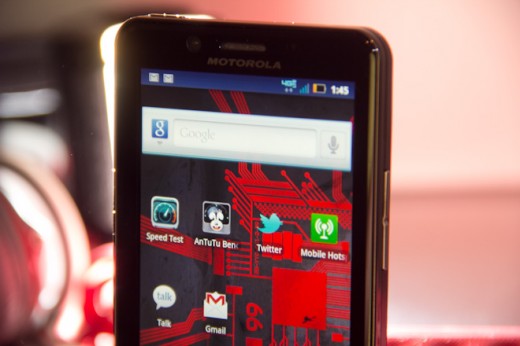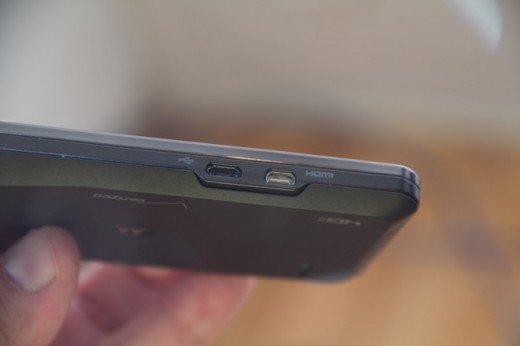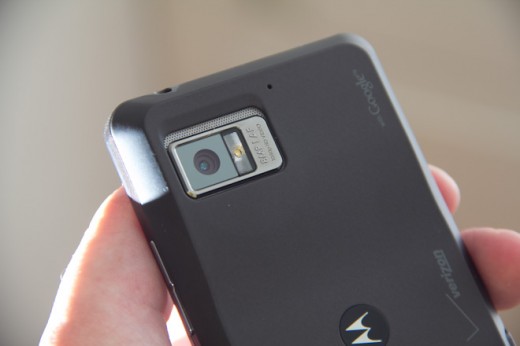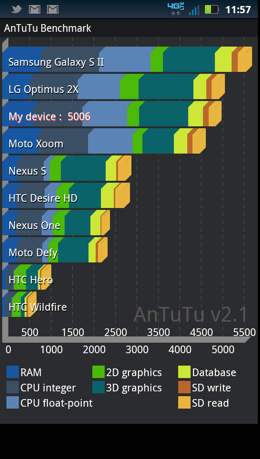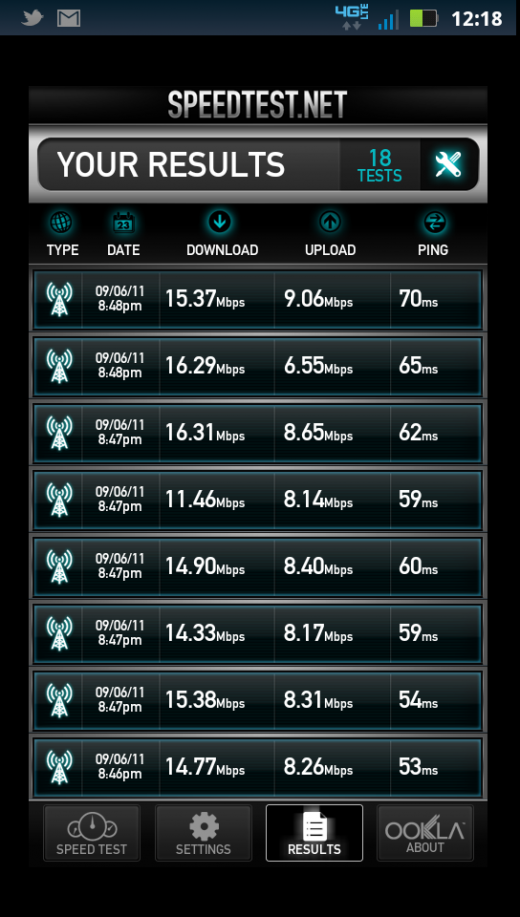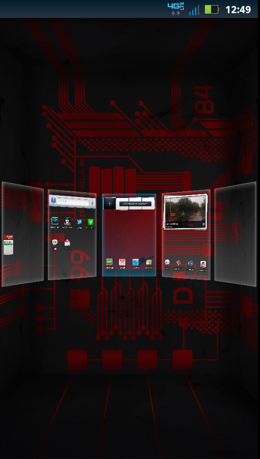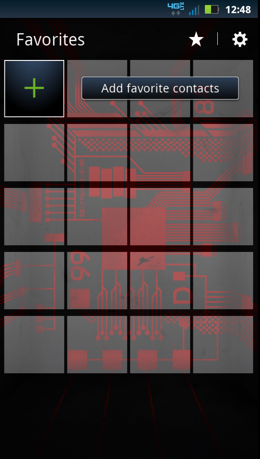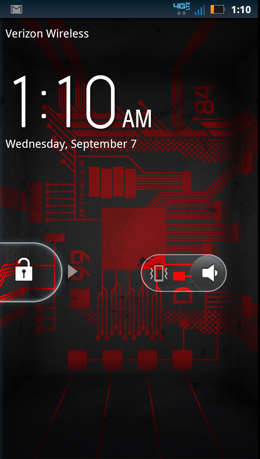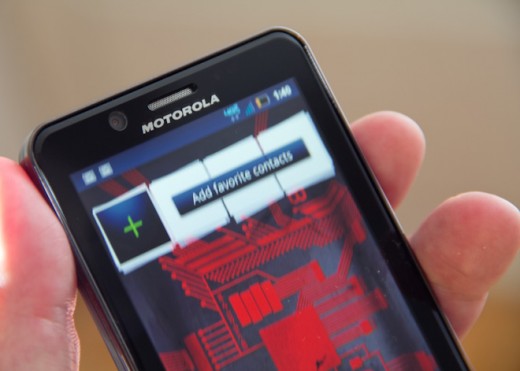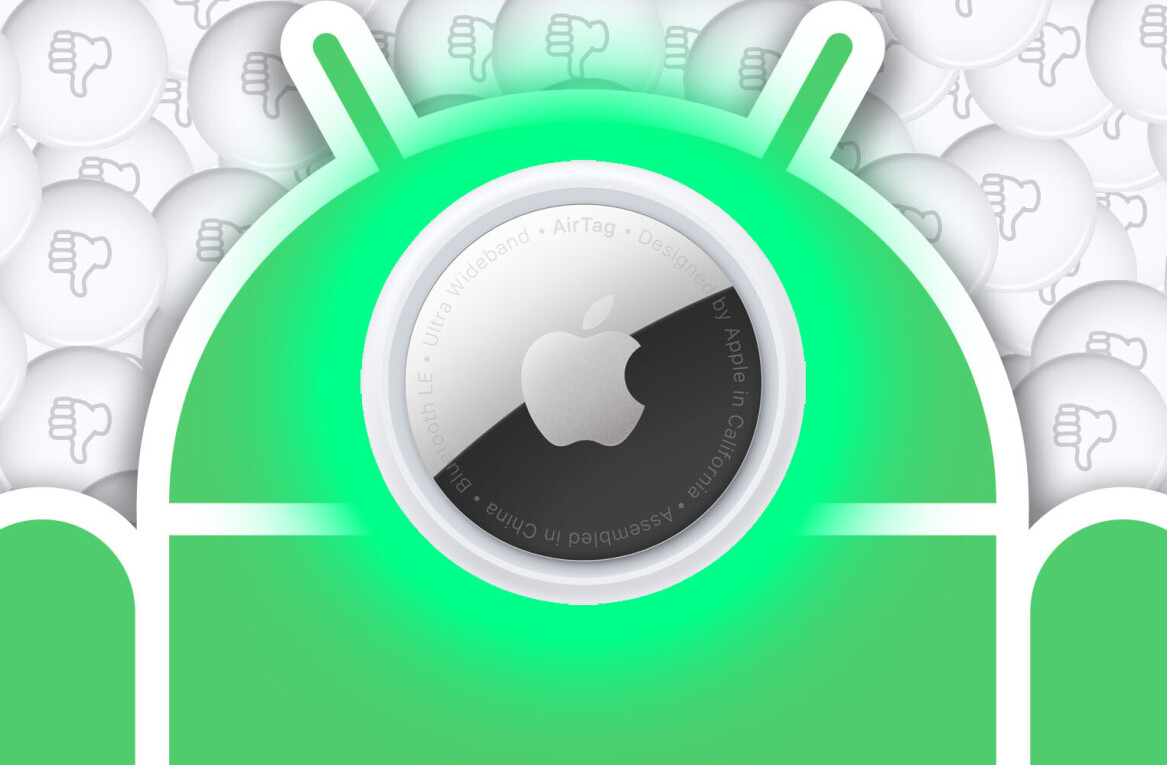
The Droid Bionic is here and it’s bringing with it some impressive firsts. It’s the first dual-core LTE phone on Verizon, it’s the first to record 1080p on Verizon and it’s the return of sorts for Motorola as it fields a true flagship device on the partner network that launched its Android career.
The Bionic will be launching tomorrow at Verizon stores and elsewhere for $299, a hefty pricetag that should indicate a hefty feature set.
The Droid line, although generated in a marketing meeting by Verizon, has become synonymous for many with Android in general. People don’t ask for an ‘Android’ phone, they ask for a ‘Droid’. This has always lent the phones that have come in this lineup an extra bit of cachet, whether deserved or not. After a couple of lackluster outings in the Droid uniform, Motorola is aiming for the stars with the Bionic. It’s beefy, it’s packed with goodies, but is it worthy of the pole position? Lets find out.
Design and hardware
The Droid Bionic is built well. There is a nice heft and solidity to it that is lacking in its otherwise well-designed Samsung cousin, the Nexus S. The angular Motorola feel is here, but it’s been tempered significantly since the Droid 3 and the lack of a physical keyboard has cut some of the fat from it so it doesn’t feel as bulky. The back of the device has a nice soft touch coating that, while it does gather skin oil a bit more than a shiny surface would, makes it easy to hold in one hand without fear of it sliding out.
The edges and angles have all been bullnosed, which makes it more comfortable to hold it resting against the edges of your hand than it would be if they had chosen to finish it off with hard corners. The traditional soft-touch buttons are there at the bottom of the screen, followed by a small but noticeable chin that is emblazoned with the Verizon logo and a microphone hole. The logo is one of two on the front and four on the back, continuing the Verizon (and Google) tradition of over-branding their devices.
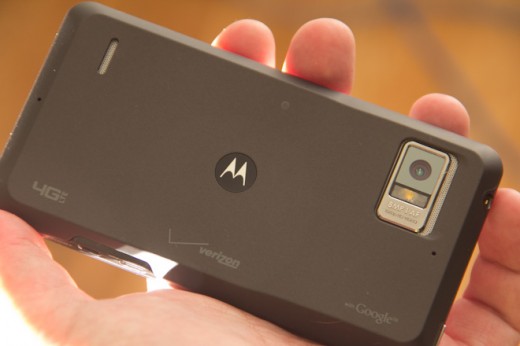
It gives it a sort of Nascar feel to have all of this signage on it. It’s annoying and could easily be done without. The simple Motorola ‘M’ on the back would have sufficed, but that is unlikely to happen when all of the partners in this device feel that they have to leave their mark.
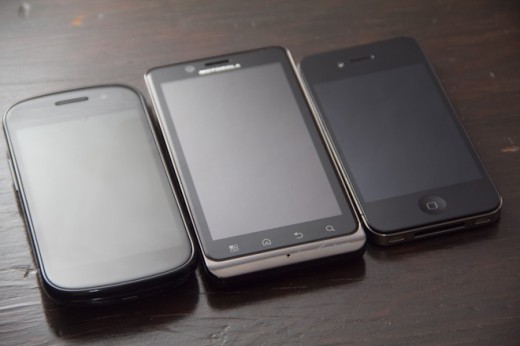
Other than that it’s a fairly handsome device. The back of the phone reveals a hump near the top which houses the radios and the camera. This makes it slightly thicker at the top but overall almost the exact same thickness as the Nexus S. The phone is 4.92″ long x 2.63″ wide x .43″ thick and weighs in at 5.57 ounces. This makes it slightly thicker than the .5″ Droid 3 at the fattest point, but slightly lighter than the Droid 3, which weighed in at 6.5 ounces. It is still far, far thicker than the Galaxy S II or the iPhone 4 which clocks in at .36″.
Hardware-wise the Bionic is something of a Frankenstein device. It has the Texas Instruments 1GHz OMAP4430 Dual-core processor of the Droid 3, along with the Droid X2’s 4.3″ qHD screen. Those come paired with the LTE radio of the Droid Charge and it also packs several other radios for global use, as with the Droid 3. It really is a fusion of the Droids that have come before.
Display and Accessories
Honestly the 960×540 qHD screen, which clocks in at 256ppi is a little underwhelming at a 4.3″ size. It’s plenty sharp enough for text but its not as sharp as the 300+ ppi screens out there like the one on the iPhone 4. The PenTile screen means that you also get the traditional ‘mosaic’ effect that makes it appear as if the pixels are laid out in a visible grid. It’s subtle, but noticeable, especially when lighter colors are being displayed.
It also doesn’t have the advantage of the Super AMOLED Plus technology that the Infuse 4G or Nexus S uses, so the screen isn’t as vibrant and punchy as either of those phones. The TFT tech used also means that the viewing angle is a little narrow, although that doesn’t matter as much on a phone as it does on a tablet.
The Corning Gorilla Glass topper is very nice though, and the dual anti-glare coating makes it pretty easy to see in various conditions.
The Bionic has the exact same ports as the Droid 3, featuring a Micro-USB, Micro-HDMI, volume buttons, 3.5mm headphone jack and a power/sleep button. It also packs in 16GB of built-in memory and a Micro-SD slot that will take up to 64GB more.
The package we received for testing came with just the power adapter and USB cord, no HDMI cable. Verizon is selling two accessories that are aimed at expanding the Bionic’s capabilities in a way that mimics the Atrix. There is the Webtop, which is a dock that connects your phone to a computer and the Lapdock, which contains a keyboard and trackpad. The Lapdock will set you back a cool $299, but there is a $100 mail-in rebate that requires you purchase it with the phone and a $50+ data plan. We weren’t able to test either of those.
Cameras
The quality from the rear-facing 8mp camera is decent, but nothing to get excited about, and that’s in good light. Once you get into poorer lighting conditions, the quality goes south fast, even with the flash. If you’ve got a decent amount of light, you can get shots that will document what you’re seeing, but you’re not going to rush home and print these out. Even on-screen the colors seem muted and lack contrast and saturation. It’s hard to determine whether this is a fault of the sensor or the processing chip, but either way, it suffers from the same camera deficiencies that the Droid 3 did.
There is also the matter of the camera’s response times, which are downright atrocious when it came to auto-focusing and firing. I counted off upwards of a 10-second delay at times waiting for the camera to get around to firing, while other times it would pop right off. It makes it difficult to trust the Bionic to fire off a shot just when you want it to.
The front-facing camera has even less to impress with and turns in a barely-there performance that should be adequate for video chatting in decent light, but not much else. Grainy, desaturated and generally not that great.
Neither of the cameras turn out a great still image, but thankfully the rear 8mp camera does pump out a very nice looking 1080p video. I don’t know where the logic is in the video looking so much better than the stills, but the fact remains that it does. Crisp, good framerates and spiffy saturation.
The video quality was a nice suprise after the relatively disappointing images. The iPhone, or even the Infuse 4G takes a better still, but neither of them shoot 1080p video and they would be hard pressed to do so at this level of fidelity anyway. The dual-core OMAP4430 is really showing its power here, good stuff.
Performance, voice and battery life
Fast, fast, fast. The Droid Bionic absolutely screams speed-wise in every way. The 1GB of RAM, the dual-core OMAP4430, Android 2.3.4, LTE – it’s all working together here to produce one of the fastest, smoothest Android experiences that I’ve used. Even Motorola’s on-again-off-again Motoblur enhancements couldn’t make this baby chug. Flipping around the ‘3D’ home pages and visually impressive widgets was buttery smooth and gave off no stench of framerate problems.
Maps, pinch-to-zoom, all of the little problem areas that you normally look for framerate problems to crop up. The Bionic aced all of them with flying colors.
Traditionally, Motorola’s skin has caused some major issues with even beefy processors like the 4430, but, for whatever reason, it blazes here. This is also reflected in benchmarks, where the Bionic turned in some incredibly impressive numbers, coming in at just under the Samsung Galaxy S II and LG Optimus 2X in our tests with System Benchmark. The PowerVR SGX 540 acquitted itself nicely as well, with smooth framerates in any 3D games we tried and solid scores in benchmarking.
When I say the benchmarks we saw from the Droid Bionic are good, by the way, I’m not exaggerating. It absolutely blew the single-core Nexus S away, scoring almost 1,000 points higher on the floating point tests and double the 3D graphics scores.
The call quality was good, without any remarkable level of clarity, but also nothing to complain about. It sounds pretty much like any of the Motorola models you’ve used lately I suppose, nothing really all that interesting to say here. We were unable to get any calls to drop or even for the signal to fall below two bars for that matter.
The LTE speeds we got were blazing here, although in the wilds of central California, there isn’t nearly the network congestion of New York or San Francisco or any other large city. The speeds topped out at 16.31Mbps and remained in the ballpark fairly consistently throughout our testing. Where the signal fell, so did the speed of course. But if there was a solid LTE signal, the connection was impressive.
On the whole, the 1950mAh battery seemed to acquit itself quite well, with about 25-30% battery left after a solid 8 hour day of heavy browsing, 3D gaming, video watching and syncing two Google accounts, along with a variety of social accounts to apps and widgets. It really is surprising to see this kind of performance out of an LTE equipped device, especially after the disappointment of the Droid Charge, which leaked power so fast it was nearly impossible to use LTE without plugging it in.
Software
The Bionic comes juiced up with Android 2.3.4 and the model that we got for testing had the Motoblur enhancements still installed. We were under the impression that Motorola didn’t want us to call it that any more, but the documentation that we have still refers to it as such, so we will here as well.
The ‘enhancements’ consist of icons that are slightly smaller than standard 2.3 icons and a bunch of fancy widgets including a nice quickdial interface that shows off the processor’s transparency and animation prowess. In addition, you get the aforementioned ‘3D look’ home screens that feel a lot like Honeycomb on a tablet. There is also some system-level tweaks like a predictive dialer and reskinning of almost every standard Android component.
By and large most of these elements felt forced and arbitrary. There were very few changes that were made to the stock Gingerbread firmware that we felt were improvements. This trend has been proven over and over with these third-party interfaces, which are just attempts by manufacturers to differentiate their hardware offerings from any other Android device.
There is also a variety of Verizon crapware installed on the device, most of which you will probably never touch. There are a couple of nice bits of software loaded on as well though, like a full version of Zumocast, for playing content from your computer, the Kindle app, VZ Navigator and pretty much every Google app known to man.
Verizon told us that Motoblur would be an optional install for the customer, and that it would not be required to activate or provision the device. This should mean that you can run the Bionic with a completely stock version of Android 2.3.4. If you can manage to make this happen, I highly recommend it. Stock Gingerbread is quite nice and beats out pretty much all of the third-party skins aside from perhaps Sense.
Conclusion
The Bionic ends up being a relatively solid attempt to create a device that is a fusion of the last few Droid models. It manages to maintain the Droid aesthetic, but transform it into something that’s lighter and more comfortable to hold than its predecessors.
Not everything about the Bionic is successful though, the sluggish and poor quality camera, and the pattern-plagued screen come to mind as bits of the device that we would love to see improved. The camera is terrible when compared to other Android units and off the charts bad when compared to the iPhone 4, a phone that is a year and a bit old.
The interface also feels fairly cluttered with extraneous, albeit pretty, widgets, which you have to clear out to make it feel more organized. The Motoblur enhancements are also unnecessary, but the word from Verizon that they’re optional gives us hope.
The price can’t be overlooked as a factor here though, $299 is a steep price to pay for anyone’s flagship phone, even one that’s packing 32GB of storage and that is as quick as the Bionic is. The Droid brand is recognizable, sure, but is it enough to convince the casual consumer, who doesn’t care about brands and just wants ‘a smartphone’ to shell out the same price as a 32GB iPhone 4?
The Bionic makes a case for being called the Droid line’s new flagship model, and it makes it well. The epic speed of the LTE network, coupled with the dual-core processor make this a force to be reckoned with when choosing an Android device on Verizon and puts it in the top-tier of Android devices from any manufacturer. Now we just need to pit it head to head against the upcoming Sprint Galaxy S II Epic 4G Touch Disco Foxtrot Electric Boogaloo Edition.
Get the TNW newsletter
Get the most important tech news in your inbox each week.

